Solve the Plastic Problem | Invent to Help the Ill | Follow Your Passion while Working a Full-Time Job | Keep Your Bones Healthy as You Age | Detect Poppycock | Nurture Friendships | Teach Struggling Readers | Judge Barbecue | Survive in the Wilderness | Create a Vibe with Coffee | Use AI in the Classroom | Keep a Pen Pal for Decades
__________________________
How to Solve the Plastic Problem
If you’ve walked along a beach or river lately, chances are you’ve frowned at plastic garbage — bottles, fishing nets, containers, straws.
National Geographic says Americans throw away 35 billion plastic bottles and 100 billion plastic bags annually, enough each year to circle the globe four times. The U.S. State Department calls plastic pollution a global crisis with impacts on ecosystems, biodiversity, climate, marine economies and human health.
Not every university can boast of having an expert on the issue, but Wake Forest can. Sarah J. Morath, a law professor and associate dean for international affairs, published “Our Plastic Problem and How to Solve It.” The book received the 2023 Nautilus Silver Award.
The plastic problem needs action on multiple levels, she says: legislative, industrial and individual. She labels single-use plastic, found in bottles, bags and cutlery, among other items, as the most harmful in the galaxy of plastic problems. “Anything that makes our life more convenient sometimes,” Morath says. “Unfortunately, we use it once and then … dispose of it.”
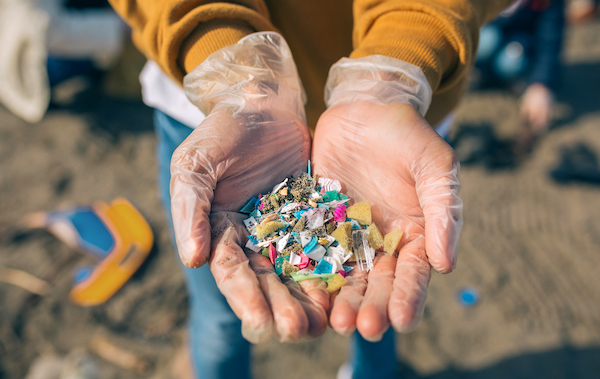
Photo/doble-d
The industry is trying to eliminate such products without losing convenience. Paper straws, for example, can replace plastic ones, or compostable material can replace plastic in cutlery.
Individuals who make conscious decisions about their own consumption patterns can make a difference, she says, by using a refillable bottle or reusable coffee mug or putting take-away food in washable containers at The Pit. The key is to pick reusable things instead of disposable ones.
Beyond the visible plastic are microplastics, which come from the slow breakdown of bigger plastics. They are even in athleisure wear. “Every time we wash our clothes, we’re washing small microplastic fibers into our waterways and into our air,” Morath says. Scientists have detected microplastics in human blood samples, but federal and state governments haven’t been testing for microplastics in water. (Late last year, California embarked on a pilot project to test for microplastics in drinking water sources.) Morath says from good data about the scope of the problem can come good policy.
She offers the caveat that there are always tradeoffs in any material solution to the problem. “That’s why I think the best (approach for the individual) is just to work on reducing the amount of plastic we use, … and then to think about alternatives.”
__________________________
How to Invent to Help the Ill
Leah Wyrick (’22) spent her teenage years watching her mother battle cancer and wishing she could do more to help.
So, when her Salisbury, North Carolina, high school challenged students to come up with a 4-year-long research topic, Wyrick chose breast cancer. “To be at every doctor’s appointment trying to figure out, ‘How do I help my mom? How do I make this situation a little bit better?’ That’s what inspired me,” she says.
At one such appointment, a surgeon told her that a better post-surgical bra could have prevented some of her mother’s complications. Her mother had tangled with a drainage tube awkwardly dangling from a recovery bra, ripping a drain from her chest.
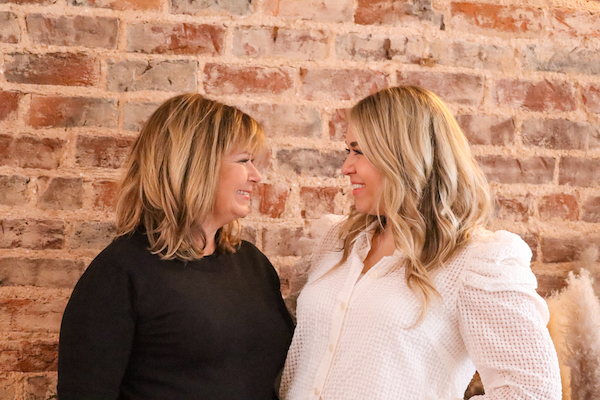
Leah Wyrick (‘22), right, with her mother, Nancy Wyrick. Photos by Emily Clark (‘24)
At age 18, Wyrick huddled at her kitchen table with a family friend who could sew and created a more comfortable, easy-to-wear bra with places to secure tubes and other parts. At first, she did not plan to bring her invention to college. When she started at Wake Forest in 2018, she planned to major in biology and perhaps become a doctor fighting cancer. That changed early on when she noticed a “Pitch Over Pizza” sign for the Center for Entrepreneurship. She couldn’t resist pitching her product, so she dug it out from the back of her closet at home and soon found herself enrolled in a class for startups, switching her major to business.
By junior year, she had started a full-fledged company named Three Strands Recovery Wear. She split time between classes and Winston Starts, a downtown incubator co-founded by Don Flow (MBA ’83), the chairman and CEO of Flow Automotive Cos. and a University trustee, and John C. Whitaker Jr. (P ’04), a former trustee and founder of Inmar Inc. Her mentor at Winston Starts connected her with a manufacturer to help start production of what is now the Resilience Bra.

The bra Leah designed to help cancer patients
Meanwhile, interns she hired from Wake Forest helped get Medicare to provide coverage, and by last year Wyrick had produced enough bras through seed grants and savings to start testing with surgeons and patients. She sold bras online and made plans for expanding into pajamas and other products designed to make cancer treatment more comfortable.
“The thing that keeps me going is this: If I don’t do this, how many people are going to suffer?” Wyrick says.
__________________________
How to Follow Your Passion while Working a Full-Time Job
What is holding you back from pursuing a passion outside your regular job?
If you’re waiting for a chunk of time to begin your creative pursuit, you’ll be disappointed, according to an alumna who juggles multiple roles.
“Nobody ever has that time in real life,” says Allison Crawford Ford (’05), a law clerk in the federal judiciary, mom, wife and, now, artist in Greenville, South Carolina. While managing her law career and family responsibilities, she painted her way to opening an abstract art and decor brand called Hello Allison Art LLC.
She calls it her “passion project” and has advice for others looking for a way to get started.
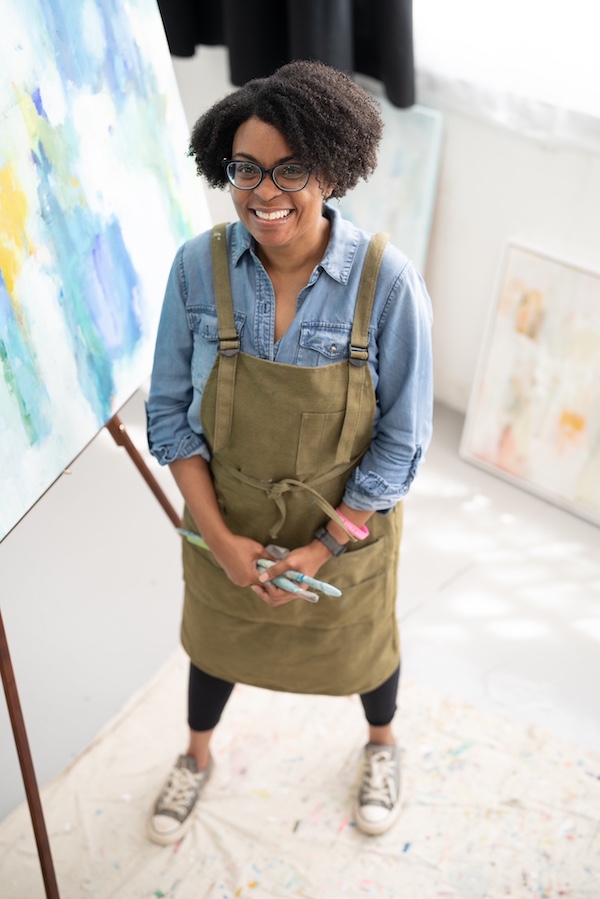
Photos/Mike Ethridge, Mike’s Pure Exposure
First, prioritize. Ford’s sons, ages 6 and 10, come first. For her full-time job at the court, she says, “It’s very important to always show up where you’re supposed to be with your full 100 percent.” She lights up talking about her law job, noting that it gives her a chance to work on the kind of community problem-solving that inspired her when she was studying political science and English at Wake Forest.
The job gives her financial flexibility to say yes only to art assignments that suit her schedule and interests. “Having the pressure off of a passion is what makes it fun,” she says.
With a fairly predictable work schedule, Ford employs her favorite calendar tools to plan the week. She describes her days as “keeping the ball rolling” at a steady pace so she can pivot when something comes up.
Don’t fall for the illusion that others are “doing all of the things” shown on social media, she says. She and her husband rely on each other to manage their home life.
While painting adds to her plate, she finds it makes her a better mom, wife and law clerk. “(Give) yourself a few minutes to just explore something that makes you happy and replenishes your soul and helps you come to something in a different light,” she says.
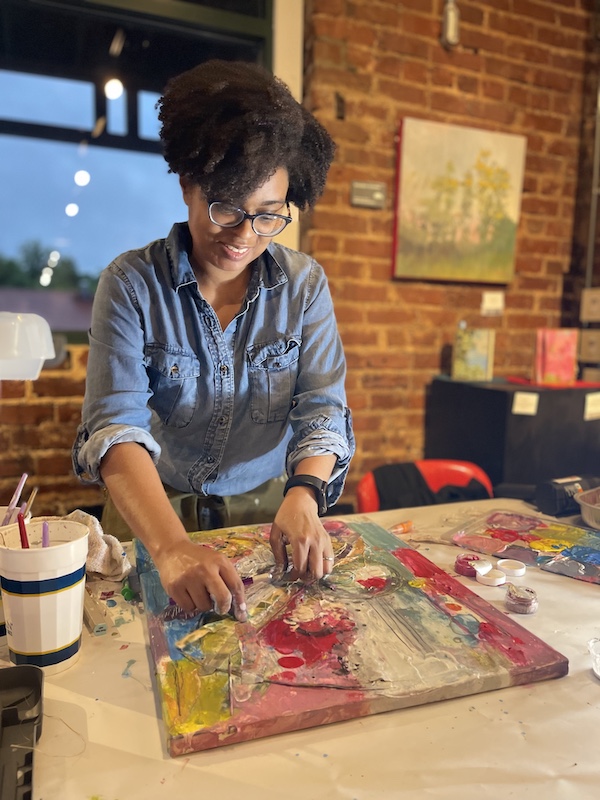
Fifteen-minute increments add up, even if she’s going over to the easel while dinner’s in the oven.
Ford points out that your passion project might result from exploring something new to you.
She was 10 years past graduation from Wake Forest and a new mom in a break between jobs in her legal career when she took a course at her local arts center. Something clicked.
She posted a few of her textured, colorful canvases on Instagram, and followers started making offers. Her passion project grew organically as she nourished it. In turn, it nourishes her.
__________________________
How to Keep Your Bones Healthy as You Age
When people say they want to lose weight, what they really want is to lose fat. But losing weight — or fat — can lead to the loss of muscle and bone, which is especially a problem for older adults already experiencing age-related declines in these tissues, says Kristen Beavers, associate professor of health and exercise science and a registered dietitian.
“The interventions that I work on try to improve the quality of weight loss by maximizing fat loss and minimizing loss of muscle and bone,” she says. Beavers studies how exercise type (for example, resistance training or aerobic exercise) during weight loss affects bone health and whether a high-protein diet can preserve muscle mass and mobility in older adults living with obesity.
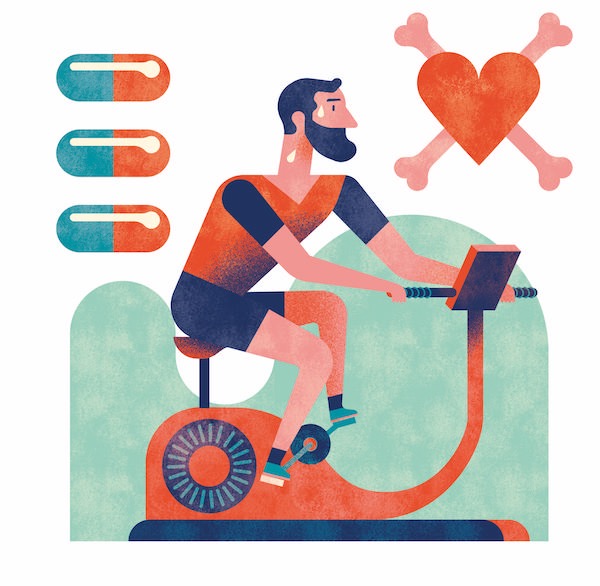
As you’re trying to lose weight, make sure you have the recommended daily amounts of protein, calcium and vitamin D in your diet. “That can be hard to do, so it requires some intentionality,” she says. “There are lots of multivitamins that can help folks achieve (the recommended amounts) if their diet alone isn’t sufficient. You don’t need to have super amounts of these things. You just don’t want to be deficient.”
And there’s no secret to what we should be eating, Beavers notes: fruits, vegetables, low-fat dairy and high-quality proteins. If you grew up on the “food pyramid,” check out MyPlate.gov, which can “generate what your meal plan should look like,” she says.
Resistance and weight training while dieting also helps preserve muscle mass. “The fly in the ointment is that oftentimes people don’t like to do those things,” she says. Many older adults enjoy walking, which provides cardiovascular and mental health benefits, but walking alone isn’t that helpful for stimulating the musculoskeletal system, she says. Wearing a weighted vest as they go about their regular day may help older adults maintain bone and muscle as they lose weight.
“What we’re really trying to do is sneak loading exercise into everyday activities,” she says.
Many older adults focus on bone health because they fear falling, breaking a bone — and losing their independence. “To minimize fall and fracture risk, balance training and home and environmental modifications are also important considerations,” she says.
__________________________
How to Detect Poppycock
As a social psychologist, Professor John Petrocelli has spent his career researching social behavior, focusing about a decade ago on one behavior with an informal name that Merriam-Webster defines as talking “foolishly, boastfully or idly … especially with the intention of deceiving or misleading.” You might know it as BS.
Petrocelli’s inspiration came from revisiting a paper by philosopher Harry Frankfurt that discusses the contrast in the ways we punish liars — firing, expulsion, prison — and how we cut people slack when they engage in the other behavior.
“My basic hypothesis is that (BS) is just as bad (as), if not worse than, lying,” Petrocelli says. In a series of experiments, he’s trying to learn more about the causes and effects with the goal of developing strategies “to better anticipate it or detect it.” His findings led to a popular TEDx talk and a book of his own. Here are a few of his best tips.
It’s human nature to avoid conflict and confrontation, so we need examples of how to question claims in nonthreatening ways rather than sidestepping them. Phrases that may work include asking someone to “tell me more about that,” or “can you explain what you mean?” or “what does that look like?” Petrocelli says. “When people are confronted with that question, they tend to start to dial it back and say, ‘Here’s what I really mean.’”
Be curious, and ask about the source with a simple question: “How do you know?” What’s even more effective, he says, is asking whether the person has considered any evidence that might undercut the argument. You could ask: “How might your claim be wrong?” Or “have you considered any alternatives?” Most people don’t think about that, he cautions, “so it can be mind-blowing.” The answer can provide insight into “whether they’re interested in the truth.”
Finally, if you’re considering a claim made in social or news media where you can’t interact with the person making a claim, the basic questions used in critical thinking apply: “Who’s claiming this? What is their expertise? What might their agenda be, and what have they said in the past? What is their reputation?” he says.
Petrocelli is testing a theory now that poppycock shared by people we know personally “has more influence than something you might see on CNN or Instagram.”
Stay tuned.
__________________________
How to Nurture Friendships
More than 60% of young adults report “serious loneliness,” deepening an “epidemic of loneliness in America” that appears to have increased since the outbreak of COVID-19, according to a 2021 Harvard Graduate School of Education report.
Marianne Erhardt, an assistant teaching professor of writing in the English department, cites that report in her first-year writing seminar, What Are Friends For?
Writing can be a way to explore our ideals of friendship while building our social connections, she says. Her students interviewed peers, role models and parents they think exhibit traits of a good friend — friendship exemplars — to ask what makes a good friend. Here’s some of what they found.
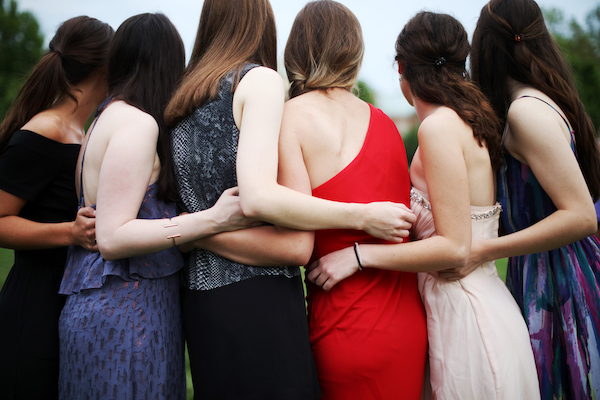
Photo/Travis Dove (’04)
Be curious about other people. Be vulnerable. Especially for adults, it gets harder and harder without structures, such as a shared class or a fraternity or sorority, to foster friendships. It can be nerve-wracking to say, “We’ve just met, but would you like to meet for coffee?” Erhardt says.
Be willing to play, she says. Say “yes” to a lot of things, especially if you’re in a new place. Join a book club, and if you discover it’s not for you, move on to something else.
Embrace the in-person and the virtual. A quick virtual check-in can help you stay in touch with friends, but challenge yourself to meet face to face. If it’s important enough, schedule it rather than continuing to say, “We should get together sometime.”
It’s never too late to renew an old friendship. Chances are the people from your past you remember fondly probably remember you with the same affection and would welcome the chance to reconnect, Erhardt says. “Everyone feels this tug of guilt, ‘Oh, I didn’t keep that relationship up.’ There’s something special about relationships that you made when you were younger because these are the people who’ve known you through different phases of your life.”
Don’t confuse friendship and popularity. They’re two different things. “Most students were concerned with the deep meaningful friendships that so many of us don’t have,” Erhardt says.
Practice and revise. “Friendships require care. And each one will evolve over time, and that’s OK,” she says.
__________________________
How to Teach Struggling Readers
Ashley Singer (’13) understands the power of individual attention.
During her first year at Wake Forest, she received a shocking diagnosis: narcolepsy. On her worst days, she feared she wouldn’t graduate, but her professors — especially those in theatre —rallied around her with genuine care. “It was a group effort,” she says. “I would have given up.”

Photo/ Aleksandar Jankovic
Those experiences helped shape her thinking about establishing a nonprofit in her hometown of Chestertown, Maryland, to embrace struggling readers. Open Doors Partners in Education began in September 2020 when it was clear to Singer and her colleague, both reading teachers at a private school, that the COVID-19 pandemic had worsened an already grim situation for literacy in their county. The two women created the nonprofit to help.
Singer already had found her passion for teaching reading, having earned a master’s degree in curriculum and instruction with a focus on reading, all while managing her narcolepsy. She helped craft the vision for the nonprofit to offer free and low-cost literacy tutoring services for students and adults. Open Doors’ toolbox includes the Orton-Gillingham approach, which uses multisensory lessons to teach reading, writing and spelling to students with learning difficulties.
Singer employs what she calls “the systematic, explicit approach to teaching phonics” while making it fun and offers one-on-one tutoring. National research has concluded that 95% of children can be taught to read by the end of first grade, and that’s a motivator for Singer.
“You need to consider the student as an individual who is worthy and valid on their own, so I never approach a struggling reader as ‘I am an expert who can teach you, and you are lower; you do not know how to read,’” says Singer. “I always approach them as a rich individual who I’m interested in: ‘I’m sorry that you haven’t been given the opportunity to learn to read. … I see that you have value, and I know that I can help you learn to read so that you can have more opportunity.’”
The nonprofit started with six students. Now, it has assisted more than 100 students — most of them from public schools. And it earned lightning-speed recognition from the Kent County Chamber of Commerce as the 2023 Organization of the Year.
“All of us at Wake Forest are very Pro Humanitate, and we want to make a better world,” says Singer, who became Open Doors’ full-time executive director in 2022. “We’re not just creating a child who can read. We’re healing a child, too.”
__________________________
How to Judge Barbecue
Ariel D. Smith, an assistant teaching professor in the University’s Center for Entrepreneurship, sampled treats from more than 500 food trucks while researching the economic and social power of Black-owned food trucks. As she puts it: “I ate my way to my Ph.D.”
She also dug deep into writings on Black culinary culture and noticed in the book-flap bio of Adrian Miller, author of “Soul Food: The Surprising Story of an American Cuisine, One Plate at a Time,” that he was not only a lawyer but also a certified barbecue judge. That clicked with her, as many food trucks she visited featured a variety of barbecue styles and meats, and she had grown up watching her grandmother serve as pitmaster at family gatherings in Birmingham, Alabama.
As the host of “The Food Truck Scholar” podcast, she seized on a social media post by Miller in early fall 2022 sharing how to become a barbecue judge and felt compelled to follow suit, Smith says.
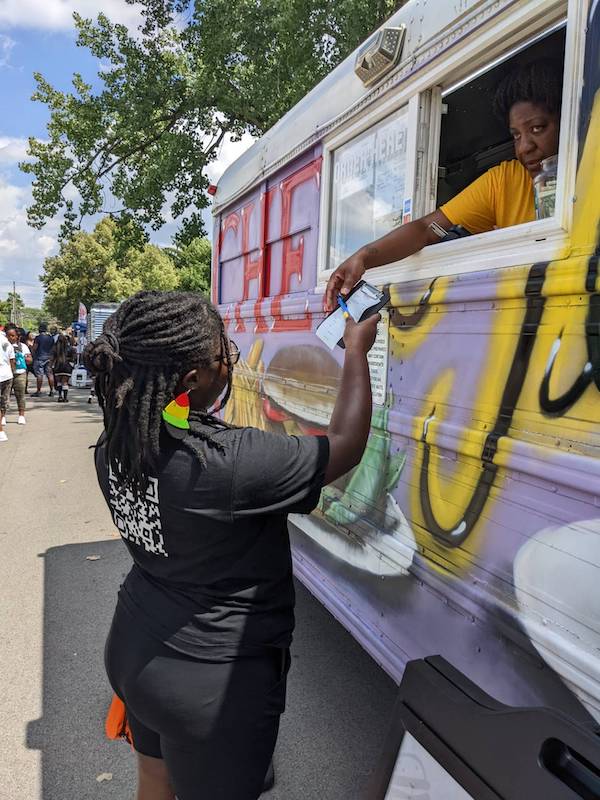
Ariel Smith, standing, doing research at a food truck
So, two weeks after she defended her dissertation that fall, she was back in class — this time at the World Championship Barbecue Cooking Contest Judges Seminar in Memphis, Tennessee. As a graduation present, her dissertation chair at Purdue University paid the $109 registration fee, which included an instructional manual, along with a daylong class. The day started with a pre-test and ended with a post-test. (One note: The Memphis training certifies judges in pork; other certifying bodies focus on a broader range of meat. The Kansas City Barbecue Society, for example, trains judges on chicken, ribs and brisket in addition to pork.)
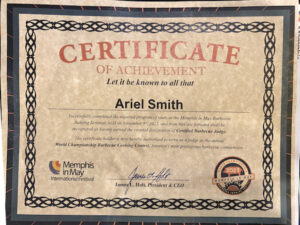
Smith’s barbecue judge certification
The test includes questions on pork-cut identification, smoking techniques, presentation and judging protocol, such as the best way to cleanse your palate between sauce tastings. (First, taste the sauce, then drink water; next, taste the meat, then drink water; and finally taste the sauce with the meat.) Students spend the rest of the day discovering the answers.
Smith learned the basics of “blind” judging, meaning judging plates of barbecue hidden under boxes. The course also covered comparative judging, where the pitmasters “give you the whole story, like it was smoked with apple chips or put in this brine or marinade. You listen to that spiel and go on to the next one.”
The class affirmed her bias toward ribs “where there’s a bit of tug to it — the meat doesn’t fall off the bone,” because meat that’s too loose is overcooked, she says. At the end of the day, she passed, and she hopes to serve as a judge at the contest at this year’s Memphis in May International Festival.
__________________________
How to Survive in the Wilderness
Before you go hiking or camping, make sure you’re prepared for whatever may happen. Meghan Belanger, assistant director of Outdoor Pursuits in Campus Recreation at Wake Forest, helps organize camping and hiking trips for students and directs the Wilderness to Wake pre-orientation program. Hikers and campers tend to get in trouble when they forget some common-sense precautions, she says.
If you’re venturing out by yourself, let someone know where you’re going and what time you expect to be back, she says. Leave a note with the same information when you park your car at the trailhead. Download Gaia GPS maps on your phone and use AllTrails to print off a paper map. Check the weather so you know what to expect.
Belanger always takes a satellite communicator, a Garmin inReach Messenger, with her. Paired with an app on her cellphone, it allows two-way text messaging and can be used to send an SOS.
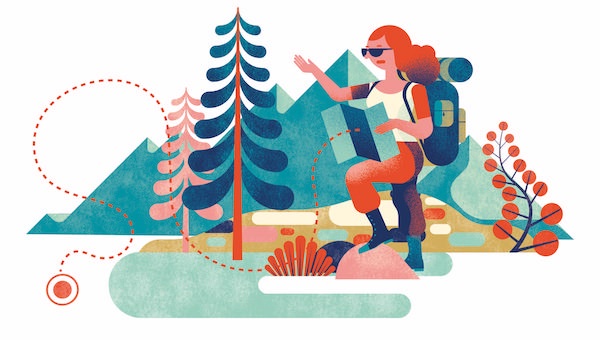
For longer trips, pack an extra day’s worth of food and water and a water filter, she says. Particularly in the winter, make sure you have a shelter and enough clothes, in case you get lost. Know how to start a fire using flint and steel. Pack a compass and knife. If you’re going to be in an area known for bears, carry bear spray and a bear canister to protect your food. “And never sleep with food in your tent,” Belanger says.
It’s always a good idea to take a first-aid course, and pack a first-aid kit when you head outdoors. “You never know what can happen or who you may come across,” Belanger says. “All of our students who lead trips must take a first-aid course.”
If you get lost, don’t panic. It sounds counterintuitive, but sometimes the best thing you can do is nothing. “Take out your map and figure out where you are and make your plan,” she says. “Stay put unless you feel confident in retracing your steps. If you’re fully lost and you’re in the middle of nowhere, you’re more likely to be found if you stay put.”
If you can’t stay put, hike up to find a cellphone signal or down to find a river, which should lead to a trail or other people. “I got a little turned around once on a solo backpacking trip (in Washington state),” Belanger says. “I crossed a river and found the trail again, so it was all good. But that gut feeling (of being lost) isn’t a good one.”
__________________________
How to Create a Vibe with Coffee
When Michael Loyd (’06) and his wife, Michelle Duffey Loyd (’08), met at Wake Forest, they weren’t yet coffee connoisseurs.
Michelle would make coffee from Krankies and “break the No. 1 rule of a French press,” Michael says. She would let the coffee sit in the press. “You’re supposed to pour all the coffee out because it’s still brewing. It just is getting yucky and yuckier by the minute.”
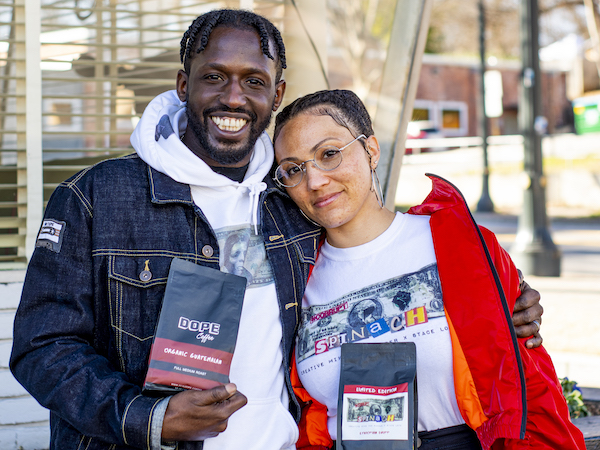
Today, they could write a coffee guidebook. As co-founders and owners of Dope Coffee in Decatur, Georgia, outside Atlanta, they’ve made coffee their business. They’ve merged their deep interest in coffees grown around the world with their passions: Michael’s music, art and design talents, honed in the recording studio he built in his Kitchin dorm room, leading to his first album’s release party at Shorty’s; Michelle’s singing, which Michael first heard when she sang in the University Gospel Choir; their love of hip-hop; and Michelle’s endless curiosity as a dietitian and chef who analyzes coffees and brewing methods with the precision of a chemist in a lab.
Their company specializes in a multifaceted vibe. The couple sell coffee beans to other venues (including 500 stores in New York added in October), online, in their store and in beverages brewed in their roastery and brewery. Friends or friends-to-be can also enjoy hip-hop music, including by Michael, an art gallery, a recording studio and a basketball court out back, for the community and for their own family. (Daughter Esther, 18, excels at music, dance and theatre; son Jayden, 15, is a basketball star; and Michael, 11, is a master coffee roaster with “a great business mind,” his dad says.)
Michelle says Dope Coffee introduces new tastes, particularly air-roasted African coffees, to Americans accustomed to standard, dark-roasted South American beans. The vibe helps open people to new experiences. “If you like music and you like hip-hop and you have a vibe that’s inviting, then that already warms you up to say, ‘Yeah, sure, give me a cup,’” Michelle says.
The two North Carolina natives discovered coffee shops in San Diego when Michael served as a Marine, but they couldn’t find one later at Camp Lejeune in North Carolina. So, they started Solar Cafe nearby. “Bam, we hit it. It was a five-star cafe,” Michael says. After Hurricane Florence in 2018, they pivoted to online sales, sold Solar Cafe and moved to Atlanta for its world-class hip-hop and more.
They define their vibe with three words: smooth, bold and togetherness.
“When I say smooth, … what we’re working toward at Dope Coffee is just creating things that people enjoy,” Michael says. Being bold led to building a “coffee and sound” touring bus in the fall to showcase unusual coffees and the couple’s 2020 hip-hop album. Togetherness happens with hip-hop’s diverse audiences and with coffee drinkers who commune over their cups of Joe, Michael says. “We just want to take that, throw some music on top of it, and pull it all together.”
__________________________
How to Use AI in the Classroom
Almost everyone teaching anything has spent the past year trying to figure out how to use artificial intelligence to accelerate learning. Following the rollout of ChatGPT in late 2022, some universities issued campuswide policies, while others, including Wake Forest, have taken a wait-and-see approach. The University recently formed a working group to think through AI going forward.
Betsy Barre, executive director of the University’s Center for the Advancement of Teaching, thinks AI policies work best when they focus on what students in a specific course are supposed to practice. If the main goal is learning to write, “you actually have to practice — to do the writing yourself,” rather than relying on AI to do it for you, she says. But AI could help in the same ways a friend might. Although you wouldn’t ask a friend to write a paper for you, you might ask for help brainstorming ideas, providing feedback, explaining class material you found confusing or quizzing you for a test.
"...there are some things we have to learn for which it can be super helpful.”
The AI policy she developed for her first-year seminar uses the analogy of learning to swim: “You could have AI explain how you swim. Assuming it had eyes, it could watch you and give you feedback on your stroke. But if it swam for you, you would never learn to swim. You actually have to practice,” she says. “But there are some things we have to learn for which it can be super helpful.”
With the AI ground rules in place, how exactly do you utilize the tools? You can type in prompts to explain concepts, critique writing using a course’s rubric or quiz you on course material. Getting the prompts just right may take a few tries and a bit of coaching, Barre says. She has found that role-playing works best. For example, a law student might say: “You’re an expert legal tutor. I’d like you to engage me in a Socratic dialogue to teach me torts.”
Barre sees no danger of AI replacing the relationships professors develop with students, but she sees certain advantages. “I’m only with my students for 38 hours in a whole semester,” she says. She hopes the tools can expand students’ learning beyond traditional class time — and provide an extra boost for people with learning barriers, such as a chemistry major for whom English is a second language or a student with dyslexia or vision loss. “This is really a way of helping your students do better in your class. And who doesn’t want that?”
__________________________
How to Keep a Pen Pal for Decades
A visiting teacher from Idaho walks into a British primary school and hands out names and addresses of children back home. One 9-year-old little boy — who grew up to become a Wake Forest professor — picks the name of another 9-year-old little boy.
“I so beautifully followed the instructions of the teacher and wrote a letter, and he wrote back. That’s how it all began,” says Professor of Sociology Ian Taplin.
In 1957 it was official: Ian Taplin in Guildford, England, and Ned Williams in Twin Falls, Idaho, had become pen pals. At age 75, they still are, with some minor editing of the label to keep up with the times.
Both agree that their mothers pushed them to write regularly at first. But the friendship had cemented by the time Taplin traveled to meet Williams in person in 1968. Taplin stayed with Williams and his family for several months.
“They Grew Up As Pen Pals, Then Met 11 Years After Exchanging The First Opening Letters,” proclaimed the Twin Falls Times-News in a story that year about the two college students. Williams expressed surprise at Taplin’s height of 6 feet and short hair. Taplin told the newspaper he had left England planning to hitchhike, and motorists won’t stop for “long hairs.”
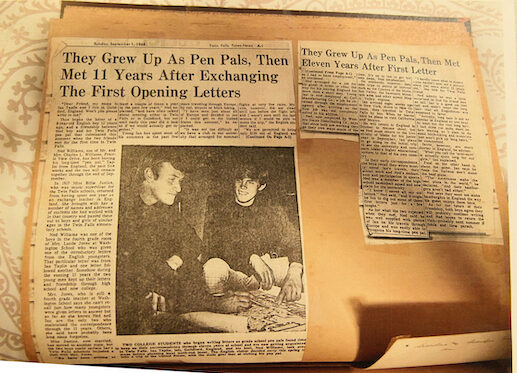
Early on the pen pals’ letters discussed travel, school and sports — both guys played basketball. When they were young men, they wrote letters in which “part of you wants to impress someone,” Taplin says, “but the other part of you is trying to communicate what you’re thinking, who you are, what you’ve been doing.”
Both kept up the correspondence and visits. Both married and had families. Both became professors. Williams is a retired English professor at Brigham Young University-Hawaii. Taplin, who directs the international studies minor, has studied a range of industries — from coal to textiles to wine and, lately, luxury goods.
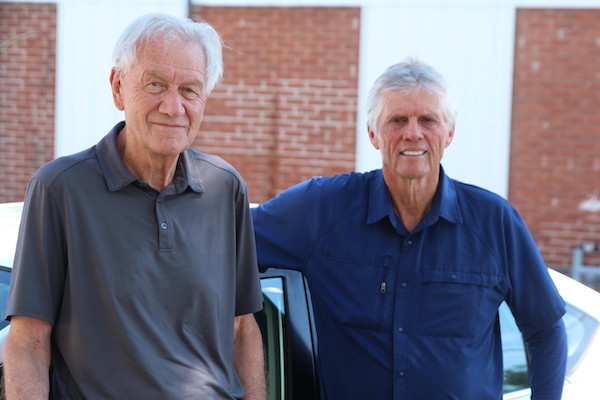
Taplin, left, and Williams appeared in a June article titled “Pen Pals still friends after 65 years” in the Times-News in Idaho. Photo by Eric Goodell/Times-News
“I think it’s quite remarkable we could have so much in common,” Taplin says. “We’ve become really, probably best friends. …”
The men have seen each other at least twice a year for the past 30 years. They eventually switched from letters to emails. Now they send texts. “Phone pals” has replaced pen pals as the label.
“Seems like after all these years, both of us still look forward to the next phone call, the next text message, the next photograph and the next face-to-face conversation,” Williams says.
And Taplin offers this advice for maintaining a pen pal friendship or whatever you want to call it in the digital age: “Just be nice to people.”
__________________________
Read more how-to stories:
How to:
How to:
How to:


